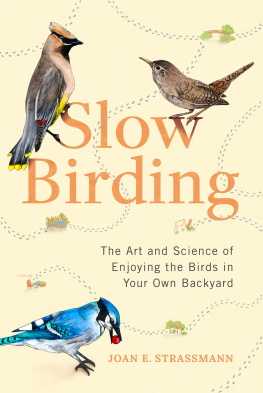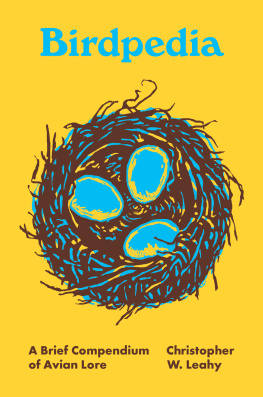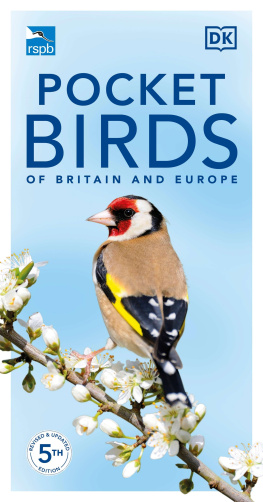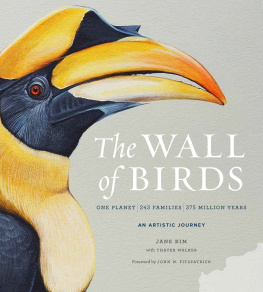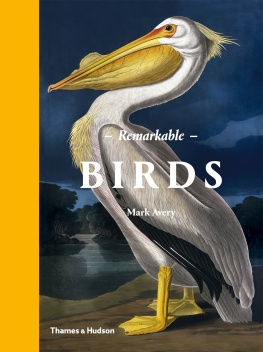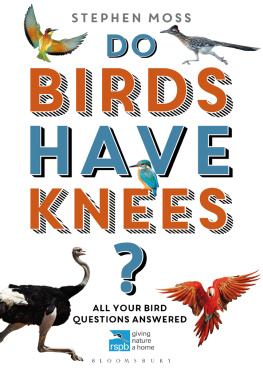How Birds Evolve
How Birds Evolve
WHAT SCIENCE REVEALSABOUT THEIR ORIGIN,LIVES, AND DIVERSIT
DOUGLAS J. FUTUYMA
PRINCETON UNIVERSITY PRESS
PRINCETONOXFORD
Copyright 2021 by Princeton University Press
Princeton University Press is committed to the protection of copyright and the intellectual property our authors entrust to us. Copyright promotes the progress and integrity of knowledge. Thank you for supporting free speech and the global exchange of ideas by purchasing an authorized edition of this book. If you wish to reproduce or distribute any part of it in any form, please obtain permission.
Requests for permission to reproduce material from this work should be sent to
Published by Princeton University Press
41 William Street, Princeton, New Jersey 08540
6 Oxford Street, Woodstock, Oxfordshire OX20 1TR
press.princeton.edu
All Rights Reserved
Library of Congress Cataloging-in-Publication Data
Names: Futuyma, Douglas J., 1942 author.
Title: How birds evolve : what science reveals about their origin, lives, and diversity / Douglas J. Futuyma.
Description: Princeton : Princeton University Press, [2021] | Includes bibliographical references and index.
Identifiers: LCCN 2021008373 (print) | LCCN 2021008374 (ebook) | ISBN 9780691182629 (hardback) | ISBN 9780691227269 (ebook)
Subjects: LCSH: BirdsEvolution. | BISAC: SCIENCE / Life Sciences / Zoology / Ornithology | SCIENCE / Life Sciences / Biology
Classification: LCC QL677.3 .F88 2021 (print) | LCC QL677.3 (ebook) | DDC 598dc23
LC record available at https://lccn.loc.gov/2021008373
LC ebook record available at https://lccn.loc.gov/2021008374
Version 1.0
British Library Cataloging-in-Publication Data is available
Editorial: Alison Kalett and Whitney Rauenhorst
Production Editorial: Kathleen Cioffi
Jacket Design: Lauren Smith
Production: Jacqueline Poirier
Publicity: Matthew Taylor and Kate Farquhar-Thomson
Copyeditor: Eva Silverfine
Jacket images (clockwise from top left): Elliots Bird-of-paradise (Epimachus ellioti), Natural History Museum, London / Alamy; Amethyst Woodstar (Calliphlox amethystina), Florilegius / Alamy; Toucan No. 2, illustration from Histoire naturelle des oiseaux de paradis et des rolliers, by Franois Levaillant, engraved by Jacques Louis Pre, 18016 / The Stapleton Collection / Bridgeman; Great Crested Flycatcher (Myiarchus crinitus), Encyclopaedia Britannica / UIG / Bridgeman; Eurasian Nuthatch (Sitta europaea), Old Images / Alamy
CONTENTS
- vii
PREFACE
This book is for birders and for all who enjoy nature and sometimes ask questions about what they see. Why are male birds more colorful in some species but not others? Why do some owls and other species come in different colors, independent of sex or age? Why is parental care of young the duty of females in some species, males in others, and both parents in still others? What are species, how do they arise, and why are there so many more in tropical regions than in the temperate zone? How and when did the astonishing variety of birds evolve? These questions may also appeal to people who are interested in evolution, if not in birds, and I hope they, too, will find something of value in this book.
All these topics, and many more, are the province of evolutionary biology because all species and all their characteristics are products of a history of evolutionary origin and modification. Many other books have focused on specific aspects of bird evolution, such as their origin from dinosaurs, but my aim is to describe the light that evolutionary science casts on diverse aspects of birds lives and diversity.
As for my own journey, I became fascinated by animals as a boy and started birding at about age eleven in the parks of New York City. My interest in birds and other animals led to majoring in biology at Cornell University, where I focused on evolution and ecology. My doctoral research at the University of Michigan combined these areas in an experimental study of competition between fruit flies. Since joining the faculty at Stony Brook University (in Long Island, New York) in 1970, I developed and have taught undergraduate and doctoral courses in evolutionary biology and, occasionally, ecology and entomology. I did research for many years on the evolution of interactions between plant-feeding insects and their food plants and have also published scientific papers on speciation, the evolution of ecological specialization, constraints on evolution, and other topics. I wrote two successful textbooks of evolutionary biology that together have gone through seven editions (so far). I hasten to say, though, that I have done no research on birds and have no professional qualifications in ornithology. I can only read about research on bird evolution, and I am an enthusiastic birder, having watched birds in fifty countries (so far). Writing this book has been an education and a great pleasure, as it joins my professional and avocational interests.
You will meet a great many bird species in this book because so many have been subjects of important research, because diversity itself is the focus and calls for explanation, and because readers in different regions or countries will be familiar with different species. Unfortunately, it is possible to illustrate only a few species. So I encourage readers to find images of unfamiliar species online; a good source (although by subscription) is birdsoftheworld.org, by the Cornell Lab of Ornithology. The print equivalent is All the Birds of the World (del Hoyo 2020). For bird names, I generally follow the IOC (International Ornithologists Union) World Bird List (www.worldbirdnames.org). I provide the scientific name of a species when it is first mentioned because some species go by different English names in different books and checklists.
Although some technical terms are necessary for brevity, I have tried to use as few as possible and to explain concepts in simple terms. Much of evolutionary biology (and of science generally) involves making predictions about what we ought to see if a hypothesis is right and comparing data with the predictions. I hope the ideas and how they do or dont match data about birds are straightforward, but in places they may need a little extra attention. I have written most of the book as if in conversation, trying to avoid professorial lecturing, and occasionally I recount my birding experiences. I see birds through the eyes of a biologist, but the emotional and esthetic experience of birding is foremost for me, and I think for most readers.
Acknowledgments
I am immensely grateful to Lucille Betti-Nash and Stephen Nash for their professional illustrations of birds in the text figures. I thank Ross Aftel and Dean Bobo for help with digital challenges, Patrice Domeischel for help with photos, Noah Strycker for checking bird names, and Sue and Ken Feustel, Kevin Padian, and Richard Prum for advice. Alice Deutsch, Mihai Chitulescu, Patricia Lindsay, Shaibal Mitra, Eric Ozawa, Phil Ribolow, Andrew Rubenfeld, and Roy Tsao kindly reviewed parts of the manuscript, and Andrew Moore provided particularly important reviews of . For providing information, I am grateful to colleagues Resit Akakaya, Joel Cracraft, Scott Edwards, Bob Holt, Bette Loiselle, Tmas Szkely, Morgan Tingley, Frank Sulloway, and Hamish Spencer. I am grateful to Rob DeSalle for sponsoring me as a Research Associate at the American Museum of Natural History and for providing desk space, and I have enjoyed enlightening conversations with museum staff, including George Barrowclough, Paul Sweet, and Joel Cracraft, who also provided access to books in his library. Some of the color photos were generously provided by friends, birding guides, and professional acquaintances, including Ciro Albano, John Barkla, Dsan Brinkhuizen, Nick Davies, David Erterius, Doug Gochfeld, Rich Hoyer, Hannu Jnnes, Phil Jeffrey, Mark Kirkpatrick, Markus Lilje, Daniel Lpez Velasco, Bruce Lyon, Lisa Nasta, Glenn-Peter Saetre, Bryan Shirley, Thomas B. Smith, Michael Stubblefield, and Steve Walter. Andrew Cockburn, Mike Cooper, Simon Griffith, Alan Krakauer, and Chris Lester helped find sources of some photos; Matt Medler and Michael Webster, at the Macaulay Library of the Cornell Lab of Ornithology, arranged for some photos from eBird contributors; and other photos were kindly provided by Bjorn Aksel Bjerke, Michael Fidler, Tobias Hayashi, Jon Irvine, Patrik Karell, Miroslav Kral, James Mott, and Shailesh Pinto. I am grateful to Doug Gill for rekindling my interest in active birding, to many friends and companions in the birding community, and to the students and professional colleagues who have enriched my life. I apologize to those whom I may have inadvertently failed to acknowledge.


